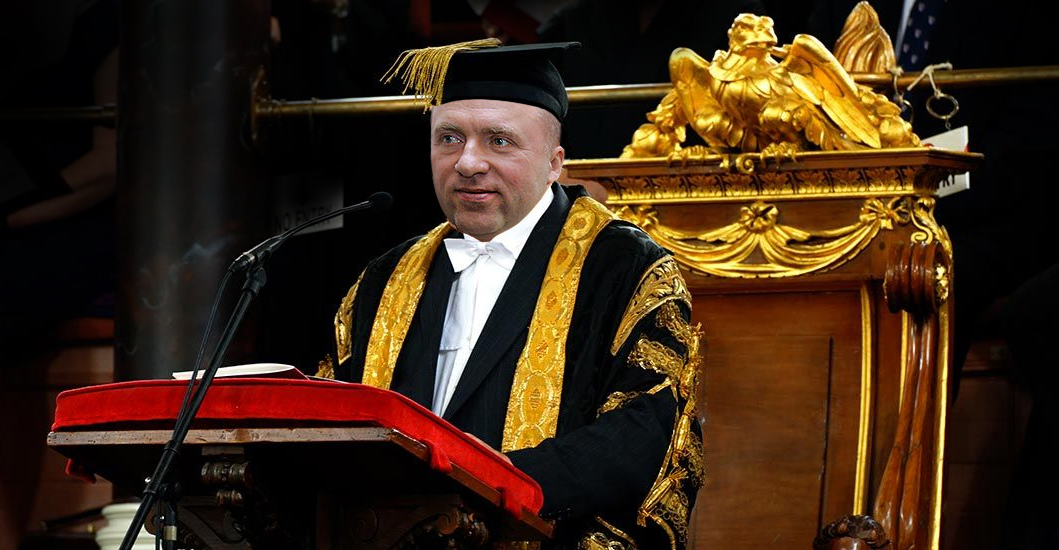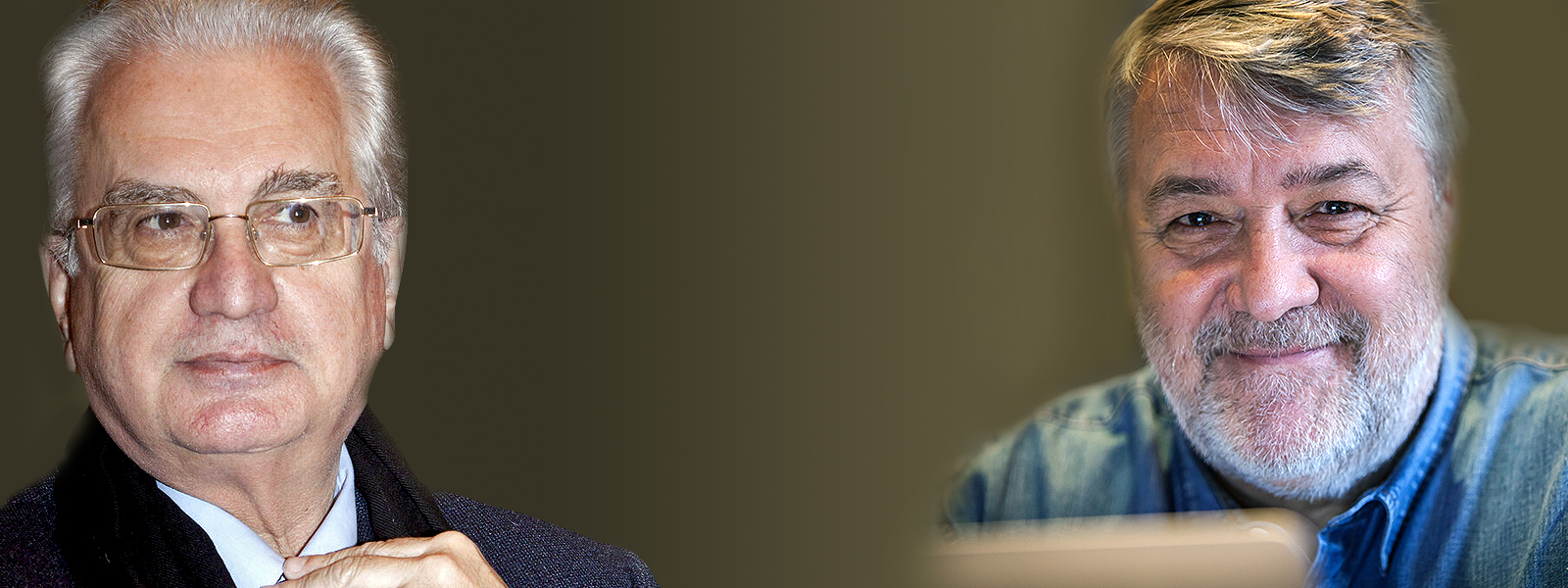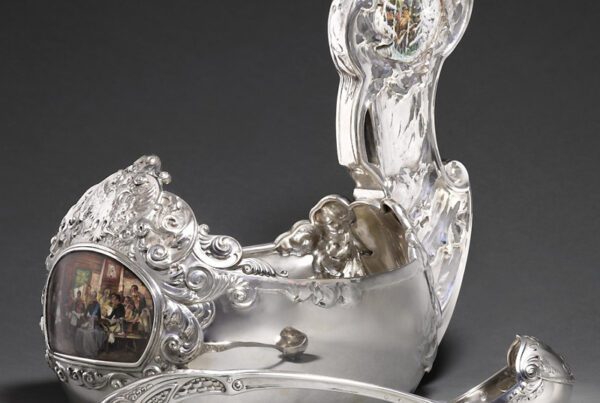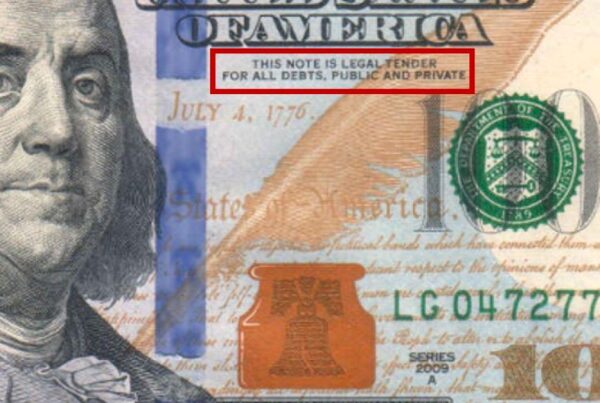Dear Mr Piotrovsky!
I would like to begin by expressing my gratitude. My thanks to you for tirelessly, night and day, giving me reasons to publicly ask you, time and again, pointed and awkward questions based on facts, logic and commonsense. Yes, facts and logic – in total contrast to the vague and confusing messages you keep feeding the media and the credulous Russian public, which traditionally holds the Hermitage and its Director in awe.
Your recent interview on Radio Russia’s Journey to the Hermitage provides another important reason to talk not just about a museum’s ‘noble mission’ – which you like to evoke at every opportunity – but also about the professional honesty and elementary decency of museum staff. Because, without these qualities, a museum becomes a mere repository of costly artefacts.
NOT ON MY LIST
In reply to a timid question from reporter Anna Vsemirnova about ‘the situation as regards the accusation of fakes in the Hermitage’ (did you expect such emotion?), you smoothly replied: ‘I naturally expected this – Fabergé always arouses such emotion.’
Mr Piotrovsky, as the Bulgakov character said: ‘I congratulate you, Sir. You lied!’ Over the past half century there have been dozens of Fabergé exhibitions around the world. I’ve taken part in many of them. But there has never been any scandal to match the one provoked by the current exhibition in the Hermitage! All these exhibitions met with acclaim; many were accompanied by lectures and seminars featuring leading experts recognized by the global museum community.
How much expert support is there for your Hermitage exhibition? It seems to be limited to Mr Ivanov – self-styled ‘Professor’ and ‘member of the UNESCO Commission for the Preservation of World Cultural Heritage,’ as well as an ‘Expert for the Russian Ministry of Culture’… at least, that’s how he is presented on the Hermitage website, with your gullible press department spreading fake information without even bothering to check the credentials of this so-called ‘Expert.’
He’s a sham. UNESCO knows of no such ‘expert.’ He does not appear on the Russian Culture Ministry’s list of experts. Mr Ivanov insists he is a ‘Professor’ – yet no reputable educational institution has recognized him as such. Couldn’t you find any other expert, Mr Piotrovsky? Or do you prefer to keep real experts at arm’s length, for fear they might condemn a world-famous museum for laundering forgeries?

Pseudo-professor, Pseudo-member of the UNESCO Commission for the Preservation of World Cultural Heritage, Pseudo-expert for the Russian Ministry of Culture
International Fabergé exhibitions are usually accompanied by a decent catalogue. But what has the Hermitage published? A cheap-looking brochure, destined to gather dust on bookshelves alongside other second-rate Fabergé publications. The only credible works to appear in its pages are famous items from the Hermitage, Peterhof and Pavlovsk – except for the Silver Rooster in the Hermitage Collection, which is a forgery. The catalogue’s ‘new discoveries’ are garbage.
To quote a fine Russian saying, Mr Piotrovsky, someone could spit in your face and you’d call it God’s dew. Have you no shame? Do not forget how such stories tend to end. Let me remind you again of what happened to Catherine de Zegher, Director of the Art Museum in Ghent, when she organized an exhibition of fakes owned by a Mr & Mrs Toporovsky. She was sacked – and the Toporovskys were arrested on suspicion of fraud. Can’t you see parallels with today’s scandal at the Hermitage?
In an effort to sidestep discussion, you declared that ‘Fabergé is more to do with the art market than with museums… Fabergé basically became famous thanks to the market.’ Once again, my congratulations! You offered Ms Vsemirnova and her audience real insight. But you forgot to remind them that works of art (whether paintings, sculptures or jewellery) have always been made to be sold; only later do they end up in museums. The fate of works by Michelangelo or Rembrandt was just the same as those produced by Fabergé. The only difference is that Michelangelo painted a Vatican chapel while Fabergé made precious gifts for the Imperial court.
I have more to say about other remarks you lobbed into your conversation with the journalist, muddying the waters so as to hide the real subject under discussion. You declared, for instance, that ‘our Fabergé show features new items that have been shown in museums all over the world – but, of course, when they’re shown in the Hermitage, everything’s different.’ All over the world? You mean in the Russian towns of Kostroma (population 270,000) and Istra (population 35,000)! OK, one tiara was exhibited in Amsterdam – at a branch of the Hermitage. Not a single independent Western museum has dared or would dare to exhibit works from the collection of Mr Ivanov.
Then, you claim that ‘disputes crop up all the time’ between art market participants. Believe me, speaking as one of those participants – market disputes among serious dealers and auction houses do not occur often, and tend to concern trifling matters. No one argues with people who deal in fakes: they sue them.
I believe you knew in advance what Ivanov’s ‘collection’ was all about – you openly admitted as much to Radio Russia: ‘I assumed it would be as written in the preface.’ You doubted the fakes would go unnoticed, and you wanted to protect yourself. Will you be doing the same for other Hermitage exhibitions – justifying potential forgeries in advance? So that, even before the exhibition opens, no one can tell from the catalogue preface whether its exhibits are disputed, fake or original?
You exploited another win-win situation by pinning the blame on the late Marina Lopato who, allegedly, had been preparing this exhibition for several years before she died in Summer 2020. I can understand ‘Professor’ Ivanov stooping so low – he seems alien to the professional ethics of museum employees (and to simple human decency) – but how could you, Sir, as Director of the Hermitage, do the same? Or are your Winter Palace staff merely regarded as obedient, uncomplaining minions?
CIRCUS ON THE NEVA
I cannot but agree with you, Mr Piotrovsky, that public debate about the authenticity of museum items – by which you hold such store – is an important aspect of museum practice, and of the art market and the cultural world in general… especially when new items and collections are concerned. And you are dead right to say ‘anything new always prompts questions and disputes.’ Maybe you should start by questioning and examining anything new that lacks transparent history, verifiable provenance or expert support. Your exhibition was three years in the making. Doubts about various items in Ivanov’s collection were expressed back in 2018 – notably by Professor Plechov of the Ferman Mineralogical Museum, who wrote to you personally about the matter. You ignored his warnings. Why were the three years not used to clarify such suspicions?
I must acknowledge, Mr Piotrovsky, that you have become a master at changing horses mid-stream. Earlier this week your scandal-plagued exhibition was bolstered by two new display-cases containing ‘Imitation Fabergé’ – i.e. fakes, confirmed as such by specialists. The idea, apparently, came from an exhibition at the Ludwig Museum in Cologne, which showed fakes and genuine items side by side. Nice try! But your initiative doesn’t come off. The Ludwig exhibition was accompanied by detailed examination and study of provenance, and an analysis of the legends and myths surrounding the forgeries – including the names of those who had falsely authenticated them. Are you, too, ready to name names, Mr Piotrovsky?
Your inimitable verbal fence-sitting merits special admiration. I quote: ‘We checked them and took a good look at them, and have no reason to think there’s anything wrong with them – plus we’re organizing round-tables on the matter.’ Why, pray, if the items are indeed genuine, do you need checks and round-tables? To look busy after the event? To make up for a lack of advance professionalism? Cynics say that all PR is good PR. But is the Hermitage fakes scandal a worthy promotional vehicle for a museum of such global standing?
I am sure you will agree, given the context, that for suspect items to be examined in your own laboratory is another reason for wonder if ‘something is rotten in the state of Denmark.’ Who will do the authenticating? Your own lab? That’s like placing a fox in a chicken coop to protect chickens and roosters from martens and wolverines! If you really wanted to answer all questions and remove all doubts, wouldn’t it make more sense to involve outside specialists?
In another of your verbal somersaults, you pull wool over journalists’ eyes with talk about ‘museum discussions’ and proposals ‘to understand and calmly assess everything… we are ready to discuss things with the Fabergé Museum.’ Will these discussions be behind closed doors? Won’t you hold them in public, and invite outside experts? What exactly are you getting at? There is a world-famous egg in the Fabergé Museum: what kind of discussion is needed about that? And, by the way, why wasn’t the Fabergé Museum invited to take part in your exhibition?
TAKING PEOPLE FOR A RIDE
What I, like any specialist or rational person, find far more alarming than your verbal acrobatics is your talk about museums and sales. You brazenly declare that a museum exhibition increases an item’s value. I quote: ‘A museum exhibition is not a pre-sale exhibition, of course – but you can’t hide the fact that being shown in a museum raises an object’s value. Otherwise you wouldn’t show anything at all. Museum-quality works should be shown in a museum. We don’t want hysterical discussions about whether something’s a fake or not a fake, about returning the money – as happens all the time at auctions. Things look different according to context, especially if they’re in the Hermitage. Most people seek a more intelligent judgment: is it good or not? Is it right or not?’
And what is this ‘museum-level credibility’ you harp on about in your interview? Do you mean: in contrast to that of auctions and galleries? That’s an interesting approach, especially if you remember how many fakes have appeared at auction – just take the Cologne exhibition you refer to, where all this is described in detail. And why, Mr Piotrovsky, do you persist in keeping silent about the lack of Fabergé experts in the Hermitage? Are you so mesmerized by ‘Professor’ Ivanov that you trust his word alone? Maybe your silence has less do with being mesmerized by Ivanov than your longstanding partnership with him, as recently evoked by the BBC.
If that’s the case than it’s easy to understand why you offer refuge to Ivanov’s forgeries. I used to think you were so seduced by his titles, knowledge and expertise that you took all his claims at face value. Now I smile at how naïve I was.
I suspect you and Mr Ivanov are indeed longstanding business partners, and that the Hermitage exhibition offers proof. I also suspect that your status as Director of the Hermitage did not prevent your becoming Honorary President of the Pedretti Foundation – a position I assume to be a well-paid sinecure.
Is all this fuss to do with legitimizing fakes, or is it do with insuring against accident? I wouldn’t be surprised if Ivanov’s entire bogus collection – armed with the Hermitage’s stamp of approval – were acquired by the State (or its trusted agents) and transferred to some other museum. Or were some private collectors lined up as buyers? I suspect that, in the absence of any real buyers (and, after all this scandal, buyers will hardly be crawling out of the woodwork), the collection may ‘accidentally’ disappear into a forest or swamp in darkest Belarus on its way back to Baden-Baden and its beloved German homeland.
One last thing. Believe me, Mr Piotrovsky, I am not happy about the need for this conversation. Not just because I respect your personal qualities and services to the motherland, but also because I consider you a victim of circumstance. I am offended for the Hermitage – which, like everyone with a Russian background, I revere. You, as Director of Russia’s leading museum, have taken advantage of your position to treat the Hermitage as your personal fiefdom: providing exhibition space to display fakes, backing the owner of these fakes, and enhancing the value of these fakes.
Isn’t it time you stopped?









